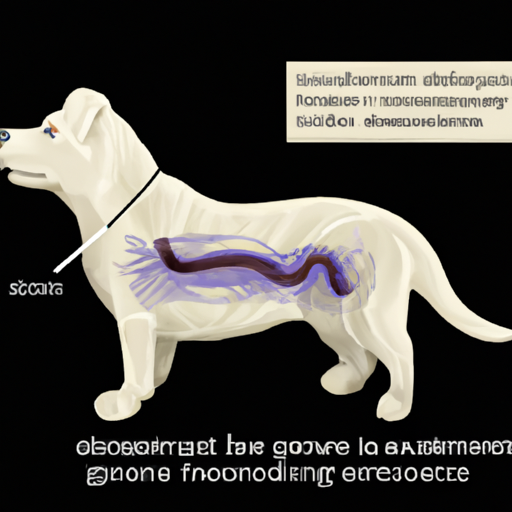Introduction
You love your furry friend, and the last thing you want is for them to suffer unnecessary discomfort or illness. That’s why it’s essential to understand the signs and symptoms of common canine health issues, like tapeworms.
Recognizing Tapeworms in Dogs
Tapeworms are flat, segmented parasites that can live in your dog’s intestine. They’re not always easily visible, but there are certain signs you can watch out for:
- Rice-like granules in your dog’s stool or fur around the anus. These are the mature segments of the tapeworm that contain eggs.
- Excessive licking or biting at the anus. This can indicate discomfort caused by the tapeworms.
- Visible segments of the tapeworm in your dog’s stool. These may look like small, flattened pieces of rice and might even move.
Remember, always consult with your vet if you suspect your pet has tapeworms.
Understanding the Life Cycle of Tapeworms
Understanding the life cycle of tapeworms can help you prevent them from infecting your pet. Here’s a simplified breakdown:
- Egg Stage: The tapeworm releases its eggs through the host’s feces.
- Intermediate Host Stage: These eggs are ingested by an intermediate host, like a flea.
- Larval Stage: Inside the intermediate host, the egg develops into a larva.
- Infection Stage: When your dog ingests the infected host, the tapeworm larvae is released and matures in your dog’s intestines.
Prevention and Treatment
Preventing and treating tapeworms in your dog involves several key steps:
- Regularly treat your dog with a vet-approved flea preventative.
- Regularly clean your dog’s bedding and living areas to reduce the likelihood of flea infestation.
- Limit your dog’s access to areas known for heavy flea populations.
- Regularly check your dog’s stool for signs of tapeworms.
If your dog does become infected, your vet can prescribe a dewormer to kill the tapeworms.
The Risks of Tapeworms
While tapeworms are not typically life-threatening, they can cause discomfort and other health issues for your dog. Some potential risks include:
- Weight loss
- Nutritional deficiencies
- Intestinal blockages
In rare cases, humans can also become infected with tapeworms, so it’s important to maintain good hygiene and promptly treat any infected pets.
Frequently Asked Questions (FAQ)
Q: Can humans get tapeworms from dogs?
A: Yes, but it’s rare. Humans would need to swallow an infected flea to get tapeworms from dogs.
Q: How can I prevent my dog from getting tapeworms?
A: Regular flea prevention, maintaining a clean environment, and monitoring your dog’s stools can help prevent tapeworms.
Q: What should I do if I suspect my dog has tapeworms?
A: Consult your vet. They can diagnose the issue and prescribe a dewormer if necessary.
Q: How long do tapeworms live in dogs?
A: Without treatment, tapeworms can live in a dog’s intestines for up to two years.
Remember, your dog’s health is in your hands. Stay vigilant, and always consult with a vet if you have concerns.



